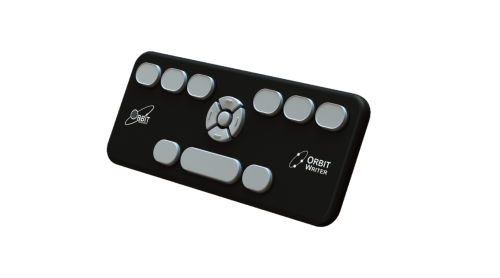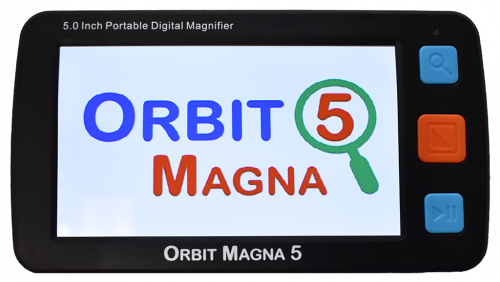Description
The Graphiti Plus is the first and only product in the world to bring interactive real-time refreshable multi-level tactile graphics and braille together in a single device. Combining Orbit’s unique Tactuator™ multi-level actuator technology for graphics, its signage quality TrueBraille™ cells, and a touch interface, the Graphiti Plus enables people who are visually impaired to seamlessly and intuitively experience graphics and text together for the very first time in a single device.
The Graphiti, launched in 2020, set the bar for interactive refreshable tactile graphics by enabling blind users to experience and interact with graphics and visual events live and in three dimensions. With its unique ability to set each pin to different heights, the Graphiti enabled users to experience topographical maps and other graphical elements such as shades and color represented as varying heights of pins. With its touch interface, users were able to draw on the tactile display with their fingers, enabling true interactivity. The breakthrough Tactuator technology allowed users to have their fingers and hands on the display as the image changes providing the unique and unprecedented ability to watch content change as it was refreshing, enabling them to truly experience real-time animation and dynamic graphics.
The Graphiti Plus now sets the bar for truly immersive and seamless access to all digital media – providing real-time refreshable graphics and text in braille. Its ability to simultaneously display the highest quality of graphics and braille text while allowing direct interaction with any digital content by touch offers limitless possibilities. Students can now have instant and direct access to books with text and graphical content and other educational materials such as computer simulations and CAD without the need for any special preparation.
It truly levels the playing field for students and professionals in any field including STEM, by providing an integrated device to create and consume digital content that includes both text and graphics. Equally importantly, it also makes everyday activities and entertainment easier and more enjoyable. Popular social-media apps and rich web content can now be experienced fully as they were intended to be. The Graphiti Plus enables inclusive education and workplaces, allowing seamless collaboration.
The Graphiti Plus has 2400 pins arranged in forty rows and sixty columns to display graphics and a line of forty braille cells. A high-quality Perkins-style braille keypad and cursor routing buttons permit easy and fast entry and editing of text in braille. Its HDMI input offers seamless connection to any device that has a video output without the need for special software or drivers. Other connectivity options include Bluetooth, Wi-Fi and USB. The touch capability enables users to point to any text on the graphic display and have it be instantly rendered in braille on the TrueBraille™ display. This allows completely new paradigms for reading and creating content.
The Graphiti Plus can be used either standalone or connected to a computer, mobile device or other sources of graphics and text. In standalone mode, it is a fully self-contained content creation and consumption solution. It includes a powerful computing platform and onboard apps. It comes with a reader and editor for braille and graphics files supporting numerous popular formats and can also create and view graphics files with embedded braille labels that are activated by touch as the user explores the picture. Other onboard apps include a calculator, clock with alarms and a braille translator supporting over forty languages.
When connected to a computer or smartphone, the Graphiti Plus leverages the extensive screen-reader ecosystem developed for the Orbit Reader family of braille displays to provide instant access to Windows, Mac OS, iOS, Android, Chrome OS, Fire and OS. Its integration with all popular platforms means that users have countless ways of interacting with their favorite apps and software. For the first time in history, a student who is blind can connect a tactile monitor to instruments, including microscopes, telescopes, or video cameras for real time depiction of dynamic content.
The touch interface allows users to control their computers or mobile devices as they would a device with a touchscreen. Users can create graphics by simply drawing with a finger and create text by typing on the Perkins-style braille keyboard.
After the transformative change that the Graphiti brought about, the Graphiti Plus now opens even further possibilities by providing an integrated device for inclusive education, professional use to create and consume digital content and for everyday activities and entertainment – using social media apps, viewing pictures and videos.














